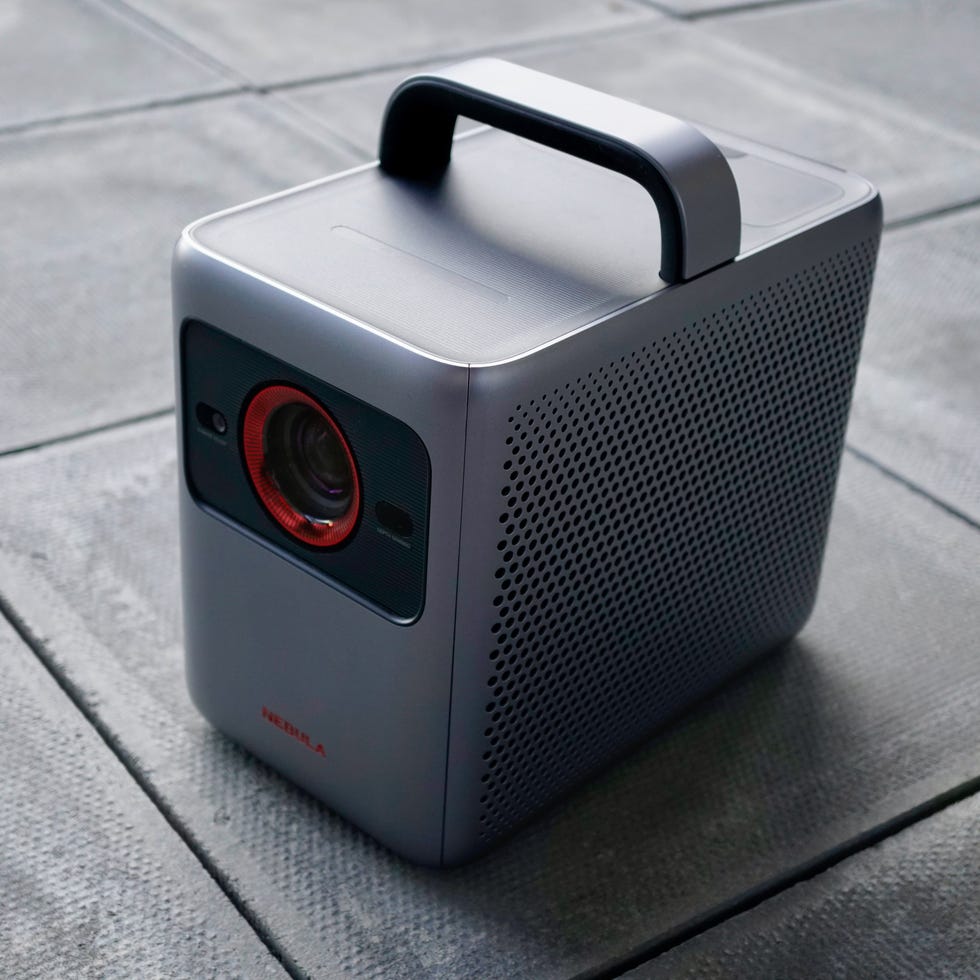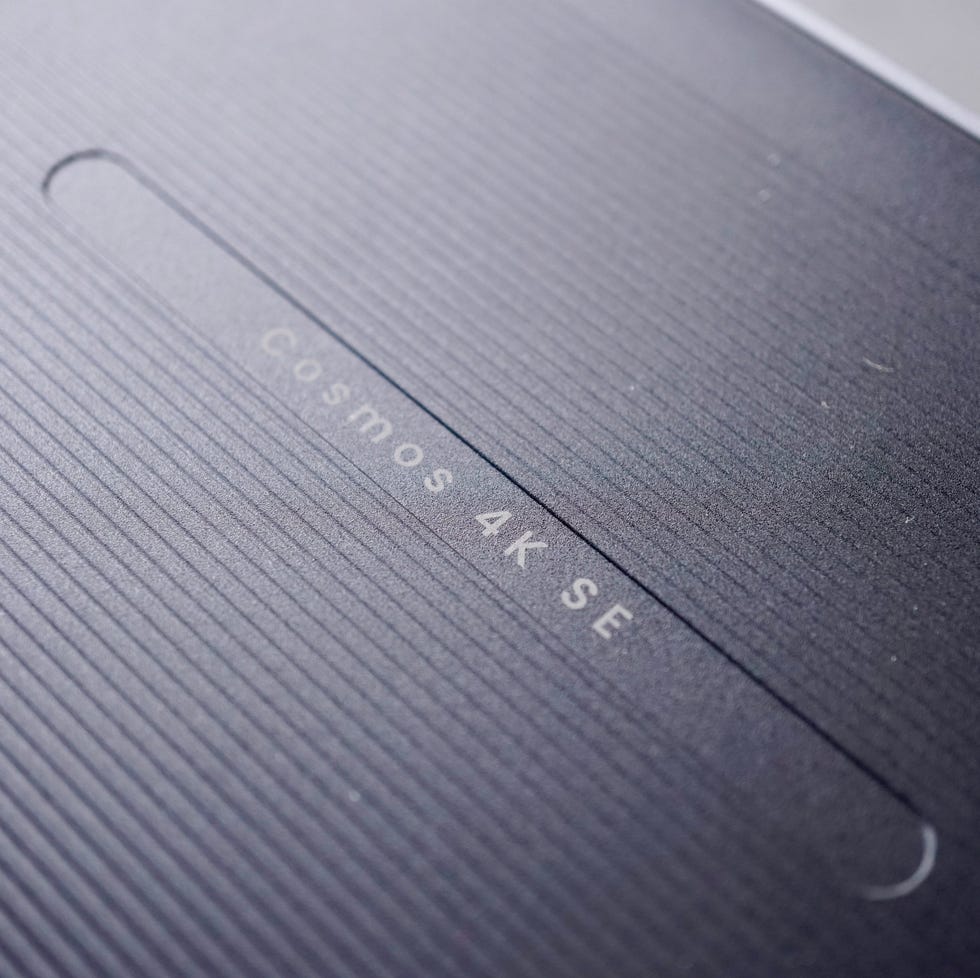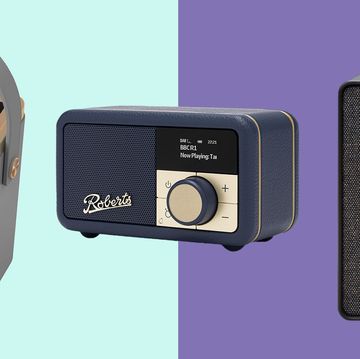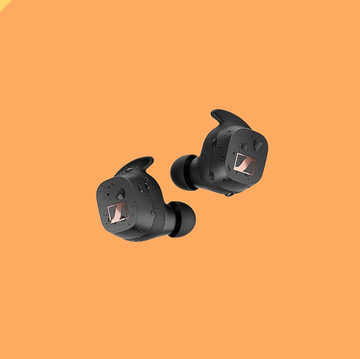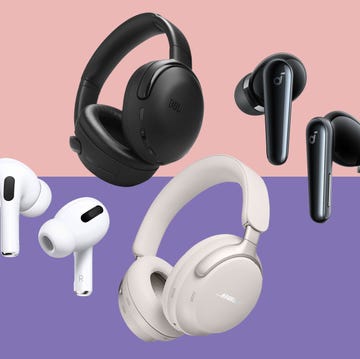I first started reviewing home cinema projectors in early 2021, and the original Nebula Cosmos Laser 4K was among the first I tested. It's a tremendous model with excellent picture quality, high brightness, easy setup and robust app support. In all honesty, it set a benchmark for future tests that many consumer-facing projectors aren't designed to live up to.
It's perhaps not surprising, given it cost about £2,000 at the time and will set you back £1,799 to this day. Now, though, Nebula has a more affordable and, in several ways, more capable solution to bring rich 4K quality to more living rooms: the Nebula Cosmos 4K SE. I've been testing it out for about a month to bring you my verdict.
Nebula Cosmos 4K SE: At a glance
Nebula Cosmos 4K SE: Design and portability
Something many people wonder is whether they could replace their TV with a projector. For some, that may work, but I want to stress that TVs and projectors are separate products with different strengths and weaknesses. A projector can be ideal for movie nights, watching streaming services and getting a much larger display size than your telly, though!
The Nebula Cosmos 4K SE is a home cinema projector powered by the mains, but it also has a large chunky handle on top so you can move it from room to room with ease. It’s not a small unit (with the exact same dimensions as the Cosmos Laser 4K), but, at 4.5kg, I find it’s not too heavy to move around. Just note that there’s no battery power here, so it’s not a truly portable projector.
On the body itself, you’ll notice the big lens and a couple of sensors. These are what enable the SE to handle automatic focus, keystone correction, and screen alignment on its own. On test, I found this works really well, and you won’t have to worry about manual picture adjustments.
The projector has a power button on top and you’ll mostly control it via the remote, which now has backlighting built-in. It’s a small upgrade, but in a dark room, it made finding buttons a lot easier for me.
At the back of the projector, you’ll find ports for two HDMI 2.1 slots (one of which supports eARC, or “Enhanced Audio Return Channel”, for sending audio to soundbars), a USB-A port, and an aux 3.5mm headphone jack. The HDMI slots are ideal for connecting streaming devices, gaming consoles or soundbars, although I ended up using a Bose SoundLink Max portable speaker that I was able to connect via the 3.5mm aux (with a long cable).
Nebula Cosmos 4K SE: Setup and ease of use
The SE’s setup is refreshingly simple, thanks to its Google TV integration. That’s one of the big differences compared to the previous model, which needed an Android TV dongle. Because the SE has Google TV built in and is certified for Netflix and other streaming services, it’s easy to use and you won’t have trouble downloading the streaming apps you want to use, like Apple TV+, Disney+, and Amazon Prime Video.
Overall, the setup itself took around 20 minutes from plugging it in to pressing play on a film, and much of that was because it needed to download an update before it could get started.
The login process and getting apps sorted out is really straightforward, even more so if you’ve already got a Google account or are using an Android phone for a faster setup.
As mentioned, before you’re even at the Google TV home screen, the projector will have worked out autofocus, obstacle avoidance (this moves the image so it isn't obscured by something like a picture frame on the wall) and edge alignment. This also has a “Wall Colour Adaptation” feature, which helps if your walls aren’t exactly white or a completely different shade.
The way the SE automatically adjusts to your wall’s colour for a more accurate picture makes it more flexible than the Cosmos Laser 4K for more rooms – for instance, my living room has more of a beige paint and the “Wall Colour Adaptation” factors that in.
Nebula Cosmos 4K SE: Picture quality and sound
You can notice the difference between high-end 4K “Ultra HD” and standard 1080p Full HD. This premium quality is ideal if you’re very keen on having a convincing home cinema experience, especially if you’re watching supported content from the top tier of Netflix, Disney+ or films from Apple TV.
I highly recommend checking if you have access to 4K content, though, because if you don’t you may end up overpaying for this feature. It’s worth mentioning that, in contrast to the Cosmos Laser 4K, the projector also adds Dolby Vision HDR support. This “high dynamic range” does wonders for details in darker scenes and helps make colours pop.
You can also customise the look of your films with a variety of modes, including Standard, Vivid, Sport, and NebulaMaster, which is made to enhance highlights and shadows for added contrast. I had no trouble with the default mode, though. And, when Dolby Vision content is on, you get specific options for Dolby Vision Dark, Bright, or Vivid too.
The SE uses a “HybridBeam” light source that's a blend of LED and laser, to deliver up to 1,800 ANSI lumens of brightness. While this is technically a little less than the previous Laser 4K model, it’s not a difference I noticed. Unless you’re watching in a room flooded with sunlight, it’s going to be more than enough. As I always recommend with projectors, you’ll see the best image in a dim or fully dark room.
On board, the projector also has dual 15W speakers (a change from the four-speaker system of the Laser 4K) supporting Dolby Audio and capable of delivering a clear sound for room-filling audio. I think this setup rivals the speakers of a decent TV and did a good job on test when I watched Lord of the Rings: The Fellowship of the Ring.
However, I always recommend improving the immersiveness of the audio experience with larger speakers or a soundbar, which is why it’s great that you can hook up a soundbar via the HDMI eARC port for richer audio. The SE also has a 3.5mm aux for connecting wired headphones if you want to create your own personal theatre.
Nebula Cosmos 4K SE: Price
There’s a lot that’s great about the Nebula Cosmos 4K SE, so it’s unsurprising that it doesn’t come cheap. If you’re comparing it to basic portable projectors, you’ll notice it’s a big step up in price – you'll pay around £400 to £700 for the best of those battery-powered models.
However, those tend to have a lower picture quality than 4K and won’t pack in all the advancements found here. Once you start comparing the SE to proper 4K projectors, it becomes clear how great value it is.
It’s £350 more affordable than the XGIMI Horizon Ultra while also having Dolby Vision and dual light source tech, around £400 more affordable than ultra short-throw 4K projectors like the LG CineBeam HU715Q or Epson EH-LS650B, and £500 more affordable than the existing high-end Nebula Cosmos Laser 4K.
Basically, at £1,299, you’re getting a lot of projector for your money, while the “HybridBeam” combination of laser and LED lighting should result in better colour accuracy and more comfortable viewing for the long haul.
The Good Housekeeping verdict on the Nebula Cosmos 4K SE
At its price point, the Cosmos 4K SE delivers excellent value. While the Cosmos Laser 4K is still sold as the more premium product with slightly higher brightness and more built-in speakers, I’d now recommend this above the older projector.
Between the addition of Dolby Vision, wall colour adaptation, more automatic picture adjustments, built-in Google TV, and HDMI eARC support, the SE is designed to be more future-proof. Its hybrid dual light source technology is also made to be long-lasting, so I can see this being a projector you’re able to hold onto for years.
So, even if it’s a tiny bit dimmer than the older Cosmos Laser 4K, it still feels like an upgrade with its smart features, smooth setup, and versatile picture adjustments. For those who want a straightforward, high-quality projector without extra dongles or workarounds, the Cosmos 4K SE is a brilliant buy.
Simon Cocks is Good Housekeeping UK’s Technology Editor, overseeing tech shopping content and strategy for the title. He previously also worked across other titles including Esquire UK, Digital Spy, Men’s Health UK and Women’s Health UK.
Simon specialises in testing the latest smart gadgets, home entertainment gear, headphones, speakers, portable chargers, radios, e-book readers and smartphones. He's reviewed top tech products from brands including Google, Apple, Amazon, JBL and Bose.
A magazine journalism graduate from Kingston University in 2014, Simon also worked on the Discovery and Silkroad inflight magazines. He then gained experience writing about entertainment at SFX and Total Film. He also contributed reviews and interviews to TwitchFilm (later ScreenAnarchy), CultBox and Frame Rated.
He joined Good Housekeeping UK as the Editorial Assistant for Special Projects and was part of Good Housekeeping’s Consumer Affairs Team between 2014 and 2019. In this role, he conducted price comparison research, wrote detailed household and money-saving advice guides and edited thousands of in-depth reviews for the Good Housekeeping Institute.
He has focused on technology and gadgets since 2020, where he started by testing out power banks and instant cameras. He writes reviews, roundups, news articles and deals updates, and also covers top tech deals during sales like Amazon Prime Day, Black Friday and Cyber Monday.
When not testing out the latest gizmos, you’ll find Simon either catching up with the newest releases at his local cinema or out shooting with his beloved compact camera.
You can follow Simon on Instagram, on Bluesky, on LinkedIn and on Threads.



